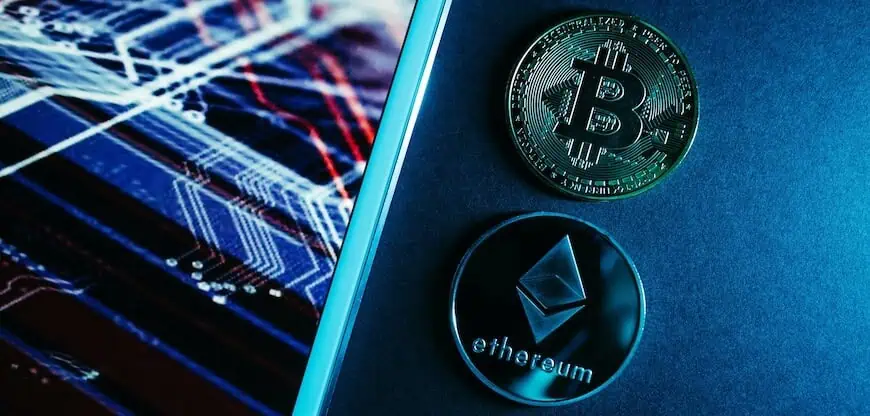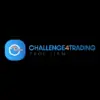Decentralized applications (DApps) and non-fungible tokens (NFTs) play important roles in the blockchain and cryptocurrency space. NFTs serve as unique representations of ownership or access rights within DApps, applicable to both physical and digital assets. Leveraging standards like ERC-721 or ERC-1155, DApps tokenize diverse assets such as in-game items, digital art, and real estate. In gaming DApps, NFTs commonly represent in-game assets, fostering trade ability and ownership across various virtual realms. This enhances the concept and promotes interoperability among different gaming platforms. The emergence of DApps tailored for creating, managing, and trading digital assets parallels the ascent of NFTs. By tokenizing their creations, artists and content creators empower consumers to acquire, trade, and possess unique digital assets. This direct interaction cultivates a new avenue for creators to engage with their audience while furnishing collectors with secure ownership validation. The combination of DApps and NFTs is further fortified by the programmable capabilities of smart contracts.

What are Non-Fungible Tokens (NFT DApps)?
NFT DApps, short for Non-Fungible, are blockchain platforms where users can engage in sales, purchases, creation, and trading of original assets like artwork, collectibles, and in-game items. These platforms act as decentralized hubs where users can have peer-to-peer transactions, empowering artists, gamers, and content creators to redefine digital ownership.
Different Types of NFT DApps
NFT DApps offer many platforms for different facets like:
Art and collectibles platforms
Platforms like OpenSea and Rarible serve as marketplaces for artists. They can tokenize their works as NFT, sell, exchange original assets, and facilitate the purchase. These platforms are important in the digital art scene because they empower artists to establish ownership and value in the blockchain ecosystem.
Digital Property – Virtual Real Estate
This platform gives NFTs a characteristic spin. Users can make money by selling and buying virtual land and property. This idea sparked interest in virtual worlds and raised the possibility of a new era in digital property rights.
Gaming And Virtual Worlds Platform
NFTs are also used by DApps such as Decentraland and CryptoKitties to represent in-game objects, characters, or items. These assets can be bought, sold, and traded. This leads to the development of concepts like play-to-earn. This allows users to earn money by engaging in blockchain-based games.
Marketplace Platform
Marketplace platforms like Foundation and Mintable are an important part of the NFT. It helps artists and producers to mint their NFTs and present them to the world. These two platforms act as intermediaries. They bring their creators and fans together with the idea of the general expansion of the NFT industry.
Decentralized finance (DeFi) and NFT
NFTs expanded into the domain of Decentralized Finance (DeFi). DApps like Aavegotchi and Rarible are leading the way to incorporate NFTs as collateral in DeFi protocols.
This approach allows users to leverage the value of their NFT holdings. They can borrow or lend funds.
Create And Launch an NFT Dapp
The process of creating NFT DApps has many series of steps:
First Define The Concept
Before diving into development, it is very important to define the concept of the NFT DApp. This involves describing the goal, identifying the target user base, and highlighting the features.
Then Choose The BlockChain
To develop an NFT DApp, you will need to choose the right blockchain first. For the NFT standards such as ERC-721 and ERC-1155, Ethereum is a preferred choice. Other blockchain platforms like BNB Smart Chain can also be an option.
Set Up The Environment
You will need to set up the development environment by installing the required tools and dependencies. This covers blockchain development frameworks, smart contract development kits, and any additional tool needed for testing and scripting.
Develop Smart Contracts
Option for creating smart contracts that will govern the distribution, creation, and ownership of NFTs. Minting, Purchasing, Selling, and Transferring are terms and features of the NFTs that are outlined in these contracts.
Wallet Integration
This will allow users to safely handle their NFTs. Users can engage with the DApp via their cryptocurrency wallets like MetaMask or Trust Wallet.
Develop The Minting Feature
With developing this feature, creators can tokenize their assets with NFTs. Developers need to design a user-friendly interface (UI) so creators and artists can easily upload their work. If the NFT DApp includes a marketplace, features like purchasing, selling, and trading NFTs need to be implemented.
Develop The Minting Feature
With developing this feature, creators can tokenize their assets with NFTs. Developers need to design an user-friendly interface (UI) so creators and artists can easily upload their work. If the NFT DApp includes a marketplace, features like purchasing, selling and trading NFTs need to be implemented.
Test And Deploy The NFT DApp To The Blockchain
Before deploying the NFT DApp to the blockchain, make sure the NFT DApp is tested to find and fix any flaws. After that, deploy the related files to the selected blockchain.
Launch And Marketing
To launch an NFT DApp that will spark interest and ensure a smooth launch into the market, a good strategy is needed. Start by releasing well-crafted smart contracts over the mainnet to officially launch the NFT DApp. Create a story that highlights the special value proposition of the NFT DApp, and share it via platforms like forums, social media, and cryptocurrency communities. Grow your audience and establish your credibility. Make sure to establish a website that functions as an information center that has guidelines and user-friendly interfaces to help new users get the hang of the platform. During the launch phrase, it is important to resolve user complaints and promote a pleasant community climate.
Obstacles In Creating and Launching an NFT DApp
Creating and Launching a NFT DApp comes with many challenges. The main obstacle is technical scalability, because of the growing demand of NFT transactions. It is important to ensure a smooth and effective user experience. Security for smart contacts is crucial. Flaws have permanent effects on users and NFTs’ integrity. It is also difficult to stand out in a market where several NFT DApps are competing. Legal ambiguities are also another level of complexity when it comes to intellectual property rights and regulatory compliance. To overcome these challenges, a careful combination of technological know-how, security protocols, user-centered design, and acute awareness of the changing regulatory environment around NFTs is required.
Disclaimer: Investing can be quite a wild ride – especially when you don’t know the terrain! To keep things from getting too rocky, take some time beforehand to get familiar with all of the risks involved. Our site is here to up your investor game by providing all available intel about platforms and trends, but we don’t take responsibility nor can we be held accountable as advisors. That being said, it’s still important for you to make educated decisions that match what works best for YOU – just remember: no amount of savvy will guarantee success or protect against loss so invest money you can spare.











